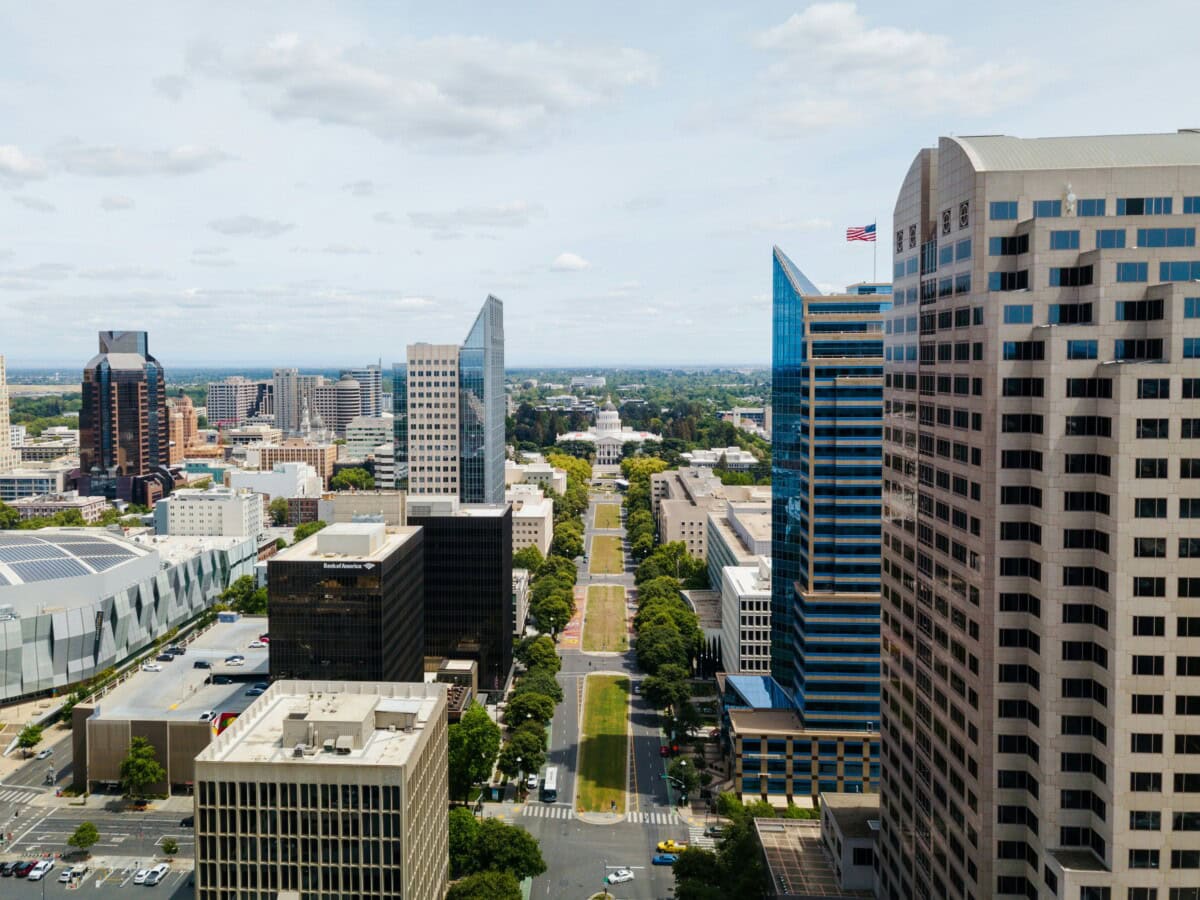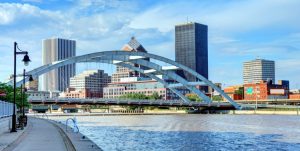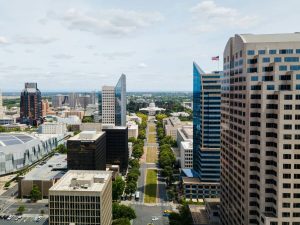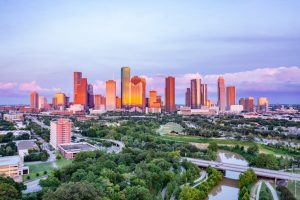
Sacramento is a city that blends history, culture, and modern flair in a way that feels uniquely its own. Known for its rich historical landmarks, vibrant farm-to-fork scene, and scenic riverfront views, the California state capital is full of experiences that everyone should have on their list. From exploring historic districts to savoring a meal at one of its acclaimed restaurants, Sacramento offers a little something for everyone.
Whether you’re purchasing a home in Sacramento, looking for an apartment to rent, or interested in a rental home in the city, these are the must-see attractions and activities that will help you experience the very best of Sacramento. Ready to check off your Sacramento bucket list? Let’s dive in.
1. Visit the California State Capitol building
Situated in the heart of downtown, the California State Capitol offers visitors a chance to step into California’s rich political past while marveling at its stunning architecture. Stroll through the Capitol Park gardens, filled with vibrant blooms and historic memorials, or head inside to discover exhibits that bring the state’s history to life.
If you’re looking to take in the stunning views of the capitol over dinner, Prelude Kitchen & Bar serves up Modern American, Farm-to-Fork cuisine. The chefs work closely with local farmers to source the freshest ingredients, ensuring every dish highlights the region’s best produce. Dining at Prelude isn’t just about the food—it’s about the experience, where each thoughtfully crafted dish connects you with the chefs, the farmers, and the natural bounty of Northern California.

2. Unwind at a beautiful local garden
For those looking for a serene escape, Sacramento has several beautiful parks and gardens that offer tranquility and beauty right within the city. “One of my favorite respites in Sacramento is the Natomas Rose Garden,” says wedding photographer Georgia Sheridan from Georgia Sheridan Photography. “It’s a lovely place to unwind, and as a photographer, I love the gorgeous settings it provides for photoshoots. Plus, it’s a wonderful spot for those looking for a peaceful garden retreat,” she adds.
3. Catch a show at the Tower Theater
The Tower Theater is an iconic Sacramento landmark, known for its retro charm and laid-back vibe. Located in the heart of the Midtown district, this beautifully restored Art Deco theater is known for its unique charm and eclectic mix of independent films, classic movies, and special events. With its vintage marquee and intimate atmosphere, it offers a throwback to a time when going to the movies felt like an experience. Whether you’re catching a midnight showing or enjoying a film festival, the Tower Theater is the perfect place for movie lovers to add to their Sacramento bucket list.
To round out your experience, head next door to the Tower Café, another iconic spot rooted in Sacramento’s history. “A favorite among Sacramento locals and visitors alike is the beloved Tower Café,” shares headshot photographer Glynns Thomas, from Glynns Thomas Portraits. “The restaurant sits in the iconic building where Tower Records began. I make a point to take visitors there, especially if the weather is nice. In addition to their indoor seating with fun decor, they have a large outdoor seating area in a lush garden setting. Beautiful trees provide shade from above, and bubbling sounds from the nearby Tower Fountain beg you to sit back and relax with good food, delicious cocktails, and great friends.”

4. Check out John C. Fremont Park and check it off your Sacramento bucket list
John C. Fremont Park is an urban oasis in the heart of Sacramento. Known for its sprawling green space, lively events, and shaded picnic spots, it’s a favorite gathering place for locals to relax or enjoy community activities. Whether you’re sipping coffee from a nearby cafe, exploring local art markets, or simply soaking in the laid-back atmosphere, this park offers a perfect slice of Sacramento’s charm.
After your visit, take a short stroll to Magpie, a low key farm-to-table restaurant that sets Sacramento apart from other places in California. It’s been around for almost 20 years, though it feels fresh as ever. You don’t need to dress up, and while their seasonal vegetable dishes are a must, insiders know to ask about the secret menu where you’ll typically be able to order a burger.

5. Spend the day at Southside Park
Southside Park is a serene oasis tucked into Sacramento, offering shady trees, a scenic pond, and expansive green spaces. It’s a favorite retreat among locals seeking a quiet escape to relax, walk their dogs, or enjoy a leisurely stroll. If you’re looking to unwind by the water or bask in the sunshine, this peaceful park provides a perfect getaway from the city’s bustle.
After a stroll through Southside Park, head to Bueno Cafe, a local favorite just a short walk away. Located in a charming Victorian house on 4th and T Streets, this welcoming cafe specializes in coffee recipes passed down through generations. Whether you’re in the mood for a traditional Cafe de Olla or a comforting Granito de Canela, you’ll taste love and tradition in every cup. Pair your drink with one of their delicious sandwiches, from classic Pastrami and Roasted Beef to a fantastic Veggie Sandwich. You can also indulge in one of their sweet treats like Conchas and Empanadas.
6. Take a visit to Midtown’s Farmers Market
Immerse yourself in Sacramento’s farm-to-table culture with a trip to the Midtown Farmers Market. This lively marketplace showcases the best of the city’s farm-to-table spirit. Here, you can browse for fresh veggies, handmade goods, or just soak in the bustling atmosphere, making this a quintessential Sacramento bucket list experience.
“Don’t miss the Midtown Farmers Market on Saturdays—a lively hub of local produce, artisan foods, and Sacramento’s community spirit, capturing the city’s farm-to-table essence,” shares the team at the local bagel and empanada shop, Forgotten Bakery. It’s a true reflection of the city’s passion for fresh, local ingredients and its tight-knit community.
For the best experience, the wedding planners at Beyond Smitten Events suggest, “Arrive early to snag a fresh cup of coffee or a refreshing green juice, perfectly paired with a pastry or a mouthwatering dish from one of the food trucks. Find a cozy spot on the sidewalk, savor every bite, sip your drink, and soak in the delightful scene of passerby. It’s an experience that captures the city’s spirit and leaves you wanting to come back every week.”
7. Explore more of Midtown
After exploring the Midtown Farmers Market, continue your adventure through Midtown’s vibrant streets. Known for its walkability, vibrant arts scene, and diverse mix of shops, restaurants, and bars, it’s the perfect place to explore at a leisurely pace. While you’re there, make sure to peruse local boutiques, enjoy a meal at a trendy cafe, or take in street art.
Shop local
If you are looking for a unique shopping experience, pop in to Midtown Bliss Home & Gifts. Bliss features over 119 local Sacramento vendors offering vintage, handmade, home decor and gifts, all under one roof. It’s a great way to support local business while also finding one-of-a-kind treasures you won’t find at the big box stores.
Dine and unwind
No trip to Midtown is complete without a visit to the Limelight, a Sacramento institution since 1959. More than just a bar, the Limelight is where locals gather for drinks, sports, and gaming in the classic cardroom. Whether you’re enjoying the lively game-day atmosphere, trying your luck at the tables, or soaking in the rich history, the Limelight captures the friendly, laid-back spirit of Sacramento.

8. Experience the beauty of Old Sacramento
If you’re looking for a peaceful and memorable morning, Old Sacramento is the perfect place to begin your day. “Start with a leisurely stroll down the cobblestone streets, soaking in the historic charm and beautiful river views. It’s a peaceful spot that feels like stepping back in time,” says the team at the local gift shop, Season’s Gifts. “No morning is complete without coffee, and Blueprint Coffee is the perfect stop. Grab a delicious cup of their expertly brewed coffee and enjoy it while taking in the sights along the waterfront.”
For lunch, don’t miss The Firehouse in Old Sacramento, a truly one-of-a-kind restaurant and event venue. Housed in a historic building that once served as Engine Company No. 3 since 1853, it’s been a beloved restaurant since 1960. Over the years, celebrities, politicians, and athletes—including Ronald Reagan, who hosted both of his pre-inaugural dinners here—have dined at this iconic spot. Known for their delicious steaks, chops, and fresh seafood, The Firehouse has also won numerous accolades, including Wine Spectator’s “Best of Award of Excellence” which they’ve been awarded every year since 2002.

9. Sail back in time on the Delta King Riverboat
Step aboard the Delta King Riverboat and journey into Sacramento’s storied past. Originally built in 1927, this historic paddlewheel steamboat offers a one-of-a-kind experience that blends the charm of the golden age of river travel with the conveniences of today. With its picturesque rivers, Sacramento provides the perfect setting for this timeless adventure.
“One of my favorite old-world experiences is enjoying a meal onboard the Delta King Riverboat. Being that Sacramento is known as the city of rivers, it’s very fitting that guests can get a glimpse into the golden age of river travel while enjoying modern amenities and riverfront views,” shares Gennifer from the local lifestyle blog, Sacramento Love. “Today, the Delta King serves as a floating hotel, restaurant, and entertainment venue, offering guests a chance to dine in style while soaking in stunning riverfront views.”
10. Dive into Sacramento’s literary scene
For book lovers, the city’s independent bookstores are a must-visit for your Sacramento bucket list. Whether you’re browsing through the stacks at a local favorite or hunting for rare finds, there’s always something new to discover. Spend an afternoon wandering through their shelves, chatting with friendly owners, and finding your next great read. It’s the perfect way to slow down and connect with Sacramento’s creative, book-loving community.
Sacramento’s only bookstore specializing in the arts
For fine art enthusiasts, Amatoria Fine Art Books is a woman-artist owned bookshop in Sacramento that buys, sells, and trades coffee table books, fine and small press, artist books, photography, exhibit catalogues, and ephemera.
Three floors and a million stories
Whether you’re new to Sacramento or a long-time resident, let Capital Books be your source for new books, games, and puzzles. They also hold exciting author events and RPG game nights. Capital Books features three floors and a million stories.
11. Wine and dine at Scribner Bend Vineyards
If you’re seeking a charming and scenic winery experience, Scribner Bend Vineyards is a must-visit among Sacramento Delta wineries. They offer a variety of estate-grown wines, wood-fired pizza from Paesanos, and a picturesque setting perfect for a relaxing afternoon or your next private event. Whether you’re a wine enthusiast or simply looking for a lovely day out, Scribner Bend delivers a truly memorable experience.

12. Savor all the local flavors of Sacramento
Sacramento’s culinary scene is a delicious showcase of its farm-to-fork roots, offering an array of fresh, locally sourced dishes that highlight the region’s agricultural bounty. With innovative chefs and a commitment to sustainability, dining in the city is a true celebration of flavor and community, one of the many reasons Sacramento is such a good place to live.
As the team at Canon in East Sacramento shares, “Sacramento is renowned for its farm-to-fork dining scene. Our proximity to one of the most diverse and significant agricultural regions in the world gives our chefs unprecedented access to the freshest and most vibrant produce around, making Sacramento a destination for foodies near and far. For suggestions, turn to the California Michelin Guide, where Canon restaurant is one of several Sacramento restaurants to be recognized by the prestigious publication.”
Checking off your Sacramento bucket list
Sacramento is a city full of must-see spots and memorable experiences. Whether you’re exploring the historic streets of Old Sacramento, enjoying a meal along the river, or soaking in the local culture, there’s no shortage of things to do in the city. Each Sacramento neighborhood has its own charm, and the city’s beautiful landscapes and rich history offer something for everyone. So, grab your bucket list, get out there, and see what Sacramento has in store. You’ll quickly find that this city has a little bit of everything, and you’ll love discovering it all.





